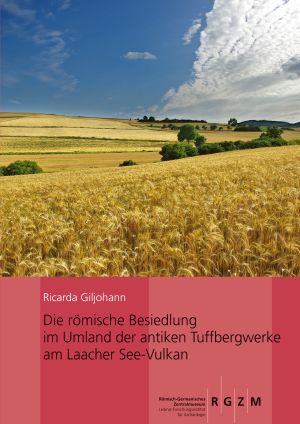
Zitationsvorschlag
Lizenz

Dieses Werk steht unter der Lizenz Creative Commons Namensnennung - Weitergabe unter gleichen Bedingungen 4.0 International.
Veröffentlicht
Downloads
Die römische Besiedlung im Umland der antiken Tuffbergwerke am Laacher See-Vulkan
Am Rhein nördlich der Mosel trafen Caesars Truppen auf eine mit Gutshöfen besiedelte, fruchtbare Beckenlandschaft und einen florierenden Mühlsteinhandel. Die germanische Okkupations- und Urbanisierungspolitik des Kaisers Augustus bedeutete u.a. den Beginn der Steinbauweise in Deutschland. Vor allem die Tuffvorkommen um den Laacher See-Vulkan traten ab diesem Zeitpunkt in den Fokus der römischen Bau-meister. Bereits in früheströmischer Zeit entstand hier eine antike Industrielandschaft, für deren Entwicklung die Voraussetzungen – qualitative, vulkanische Gesteine und der nur 5 km weit entfernte Rheinhafen von Andernach – besonders günstig waren.
In diesem Buch werden mehr als 200 römische Siedlungsfundstellen und die gut 450 Jahre andauernde Entwicklung der Gesellschaft in diesem Teil von Obergermanien behandelt. Die Einführung der Tuffsteinindustrie und die Stationierung römischer Truppenverbände ließen rasch eine wohlhabende, provinzialrömische Mischkultur entstehen. Selbst nach gravierenden Zerstörungen im 3. Jahrhundert entwickelte sich im fortgeschrittenen 4. Jahrhundert erneut eine prosperierende Gesellschaft bis in die erste Hälfte des 5. Jahrhunderts, unter zunehmender Zuwanderung von Germanen. Bereits bekannte herausragende Funde, wie das Nickenicher Nischengrabmal oder die Krufter Säule, werden im Gesamtkontext betrachtet. Neu vorgelegt wird archäologisches Fundmaterial aus dem 1.-5. Jahrhundert, vor allem aus Gräbern der frühen Kaiserzeit und der ersten Hälfte des 2. Jahrhunderts. Über 20 Wasserleitungsfunde, meist in Qanatbauweise, sowie eine mutmaßlich zivile Bergmannssiedlung beleuchten Besonderheiten der ländlichen Besiedlung im Umland der römischen Tuffbergwerke.






